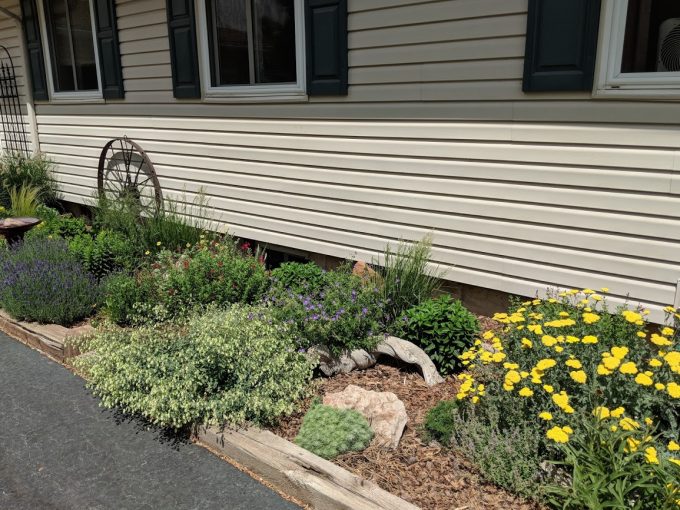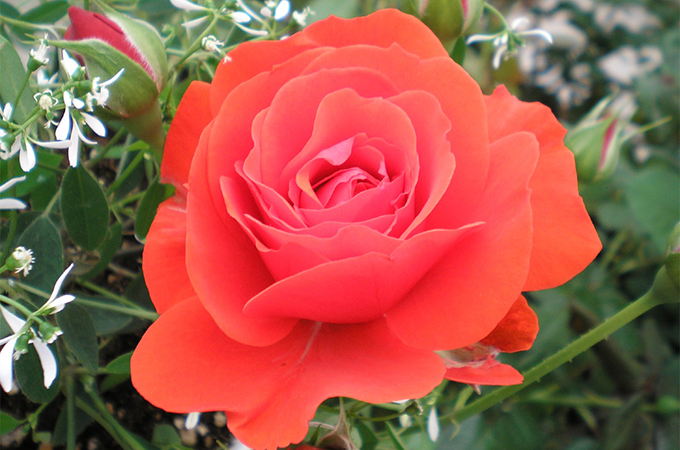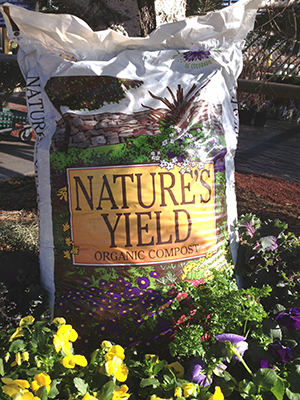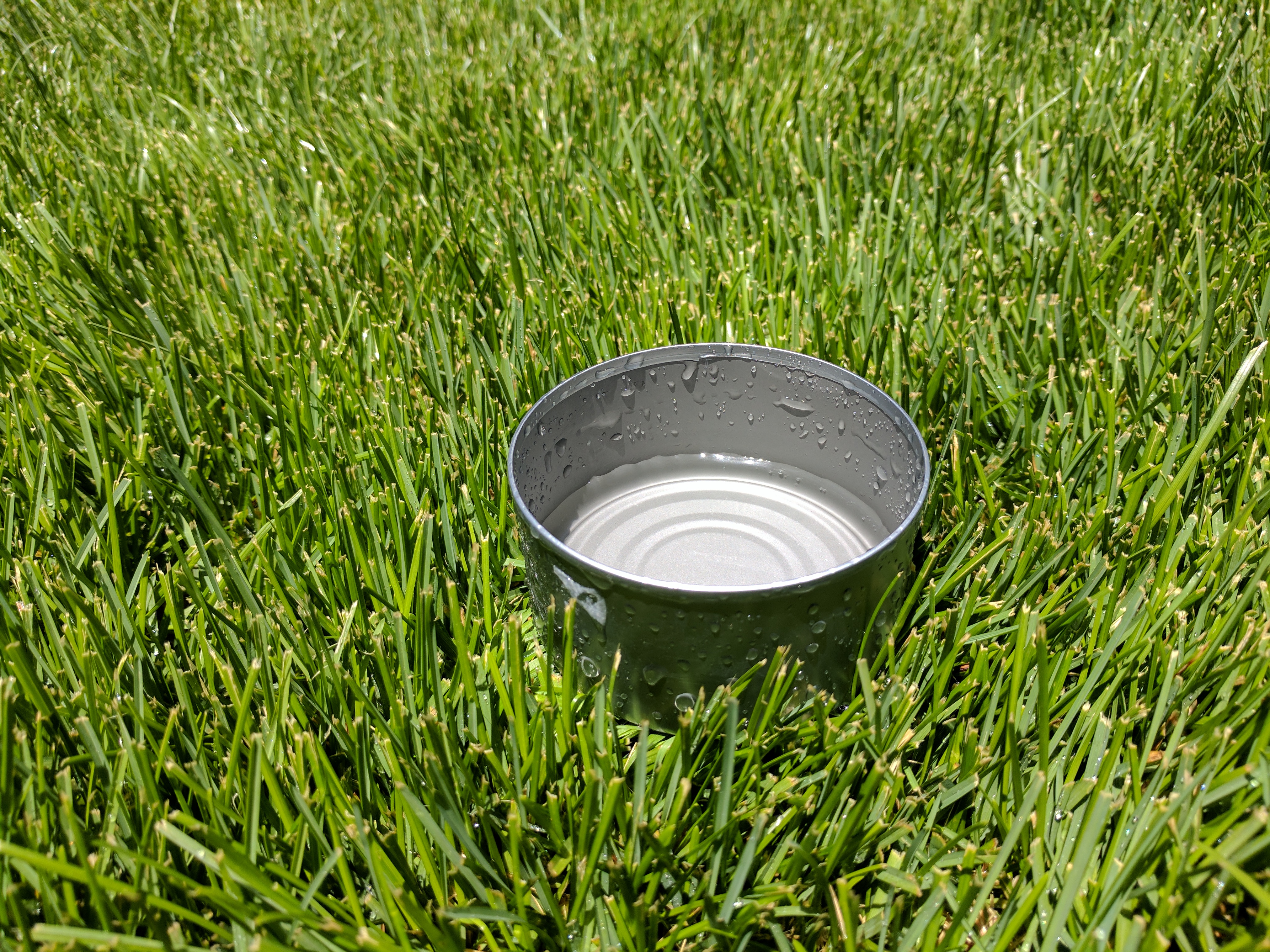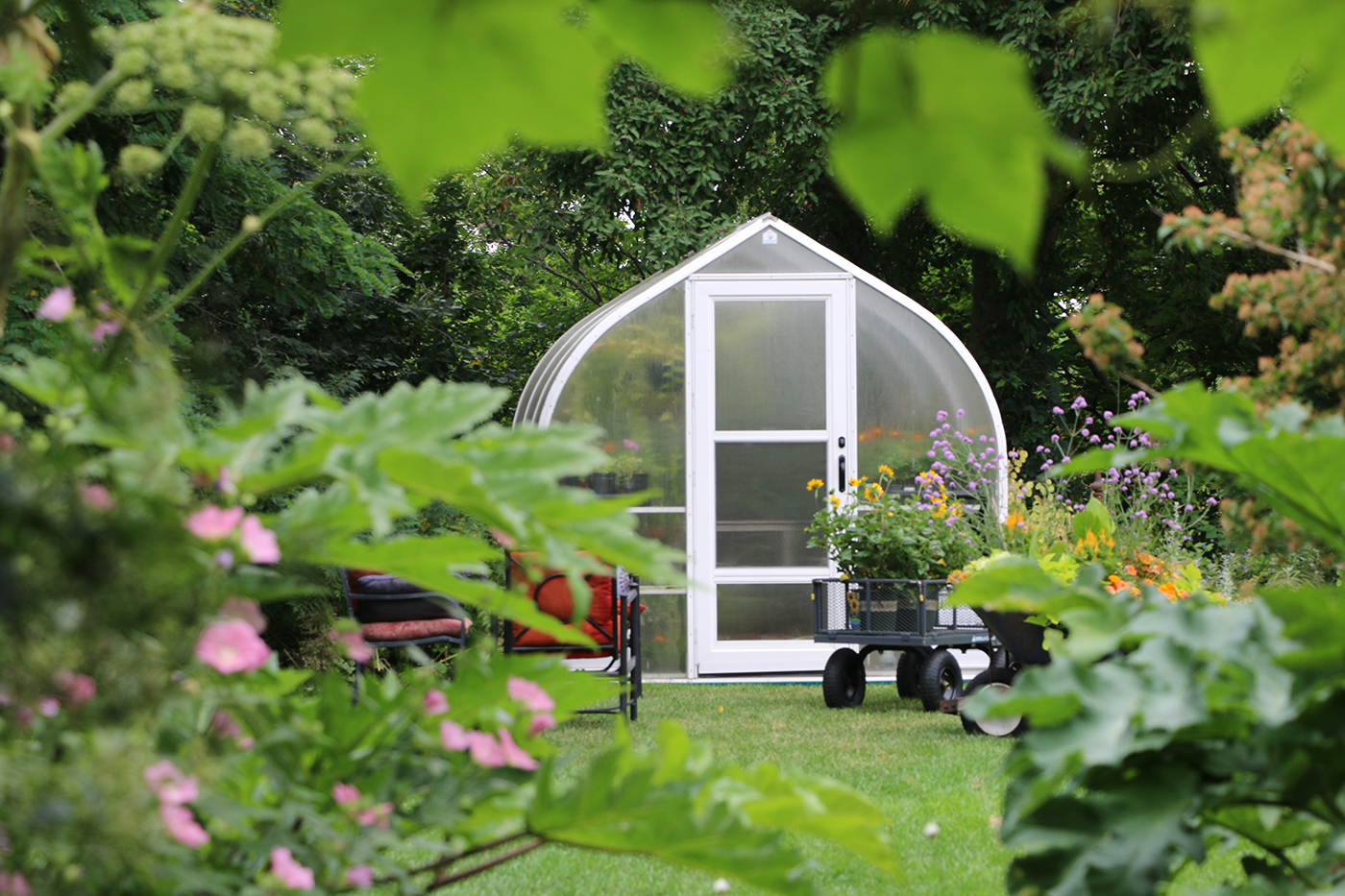A good thing to know #1: You’re in Colorado!
Much of Colorado gets around ten to 12 inches of moisture every year. That makes us a “high desert,” and we need to garden accordingly.
Plants and techniques that might work in other parts of the country may be either challenging or downright impossible here. But the opposite is true, too. For example, our high elevation and thinner air make for the great light that a lot of plants like roses absolutely love!
Roses thrive in our Colorado sunshine. That’s one reason Tagawa’s brings in and grows several thousand roses every spring. Thanks to our great sunlight, the colors of all kinds of blossoms are especially bright and rich.
Our drier air and lower humidity also help reduce problems with certain pests and diseases that are common in other parts of the country.
For those of you who have gardened outside of Colorado in the past, welcome! Just remember that being open to adjusting your gardening practices to reflect your new Colorado landscape can bring amazing results!
#2: It’s all about the soil
I was born and raised in Colorado. I don’t know what it’s like to just stick something in the ground and know that it will grow.
“Colorado clay” is real, but it’s by no means a deal-breaker. But whether you have heavy clay soil or sandy soil, the answer is pretty simple: compost! Tagawa Gardens proudly sells Nature’s Yield compost and a lot of us who work here use it in our own gardens.
“Fully-finished” (completely decomposed) homemade compost can be excellent, too. Seasonal applications of compost will help open up heavy soil and create tiny openings for air and water that plant roots need to thrive It also helps sandy soil hold on to moisture that would otherwise just run right down.
Two to three inches of top-quality compost should be worked into the root zone of annuals beds or into the planting holes of trees, shrubs, and perennials.
Good soil is a living thing. “Feeding” your soil seasonally with a valuable resource like compost can make a huge difference for your plants.
#3: Understanding Colorado sunshine
As I mentioned earlier, our thin, dry air makes Colorado sunshine a force to be dealt with in our gardening decisions. When a plant label says “full sun,” that’s not necessarily full sun here.
Mid-afternoon summer sun on a blue-sky day can be too much even for some sun-loving plants. Watch your newly-planted annuals, perennials, and veggies as the days get hotter, and make sure they can tolerate the intense rays that Mother Nature is delivering. If they continue to wilt and show faded spots of sunburn on their leaves, a bit of light-weight fabric covering can offer some helpful protection.
#4: A word to the wise on watering
Here’s a phrase to hold onto whenever you’re watering your landscape: “deeper, but less often.” It describes how to make your watering $$ go as far as possible and help keep your plants healthy in our high desert climate at the same time.
By watering longer with each cycle, you’re delivering moisture down to the lower levels of the root zones of established plants where it won’t evaporate as quickly. The moisture will be available to the roots longer, meaning you can wait longer to water the plant again.
This technique is especially helpful for lawns. The deeper watering will help support deeper root growth, helping the turf withstand hot weather longer.
Just remember that “sips” of water… amounts that will barely penetrate more than an inch or so into the soil, aren’t doing your plants any favors.
#5: Know how much water you’re delivering
When people ask us at Tagawa’s “how often should I water,” the answer is usually, “it depends.” It depends on how much water your hose-end sprinkler or sprinkler system is applying. But finding out is easy.
Take several shallow-sided cans like cat food or tuna cans and set them out over the full pattern of your sprinkler. Run the sprinkler as you would for a normal cycle, then collect the cans and combine the water they collected. Now divide the total amount of water by the number of cans you used. Say five cans collected a total of one-and-a-half-inches of water. One-and-a-half divided by five = an average of .3″ of water. That’s hardly enough to get down to the lower roots. Maybe it’s time to re-think your watering routine.
#6: Ever heard of a “microclimate?”
Understanding microclimates can change the way you garden. Think of a microclimate as a kind of mini-climate… a place in your landscape that is directly influenced by its immediate surroundings. For example, a west-facing brick wall. On a sunny afternoon, that wall is going to absorb so much heat it’s uncomfortable to touch. Plants growing near that wall are getting all of that reflected heat full force, which can actually bake them in place. At the same time, the same types of plants growing in full sun elsewhere in your yard may be just fine.
Another example of a microclimate: a gentle slope within your landscape. Air and water move in similar ways. Just as water would run down that slope, perhaps over-saturating plants at the bottom, cold air could do the same. Within just a few feet, the growing conditions can change. Definitely, something to keep in mind when you’re deciding what plants should go where.
#7: Let’s talk mulch
Using mulch is another great way to make your watering $$ go farther. A two- to three-inch layer of mulch spread on top of the soil will help keep the soil cool, conserve moisture and inhibit weeds all at the same time.
In beds with trees, shrubs, perennials, or annuals, a layer of wood chips or pea gravel (depending on the type of plants) will also help give the area a finished look. When new plants are added, the mulch can simply be pushed aside temporarily until the planting is finished.
In my vegetable garden, I use a layer of clean straw. It definitely helps suppress the weeds and protects the plants’ lower leaves from splash-back when I water, which can help prevent common plant diseases. When the season is over, I simply work the straw into the soil in the fall to decompose.
#8: Last, and definitely not least: “hardening off”
Picture the conditions inside of a greenhouse, like Tagawa’s. It’s warm and humid. No drying winds. No blasting sun. No chilly nights.
Now picture a day in the life of your garden. Low humidity, often plenty of drying wind, and significant temperatures swings from daytime into night. Whew! That’s a lot to ask of a plant that’s never known life outdoors!
This is where hardening off comes to the rescue. When you buy a plant that’s been grown and displayed indoors only, ease it into its new world over the course of four days or so. When you bring the plant home, set it out in a sheltered location… no wind or direct sun. Maybe bring the plant indoors for the night. The next day… give the plant some dappled sun and a bit more wind. Then set it up against the house that night.
You get the idea. Harden off or acclimate the plant gradually to its new surroundings. A few days of conditioning can mean the difference between a plant that’s ready to rock and roll in your garden… and one that barely makes it to the dance.
